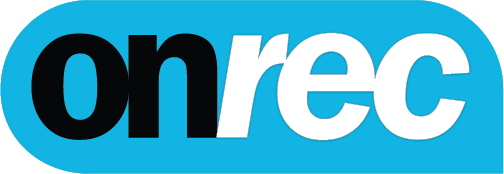A home renovation is a big commitment, especially from a financial standpoint, at a time when the cost of borrowing money and current home refinancing rates may impact the decision to renovate. Before tackling any large home improvement project, a homeowner will want to ensure it’s the right time to renovate and consider various financing options to make the most responsible decision.
Three considerations for major home improvements
There is plenty to think about before committing to a major home renovation, the first being why it’s necessary.
1. Reason for remodeling
The first step in any home renovation is considering why it makes sense to do it now. People remodel their homes for many reasons, including:
- Increase livable space and comfort: There are many ways to create a more comfortable living space, whether by adding a patio and pool to expand outdoor living opportunities or converting a basement to an in-law suite. Renovations like these typically make sense when the homeowner plans to live in the home for long enough to enjoy the upgrades.
- Get the house ready to sell: Some home upgrades will help increase the home’s resale value, so homeowners decide to tackle projects like installing new hardwoods before listing.
- Fix a safety issue: Water damage, electric problems, or foundation issues are just a few safety issues that could trigger a need for a major home renovation. When problems are diagnosed, it’s important to act quickly to limit the scope of the renovation as much as possible.
2. Project timeline
Projects that need to be done quickly might be more expensive and require more financing than those with less strict timelines. For example, if someone is selling their home within the next month, they might need financing that can be granted in days rather than weeks.
3. Project scope
A homeowner will need to be realistic about the scope of the project, understanding that renovations have a way of spiraling out of control and getting expensive quickly. For example, if someone thinks they only want to renovate the primary suite bathroom, it’s wise to consider if they’ll then want changes to bring the primary suite bedroom and closet up to date to match. It’s also worth considering all the elements a renovation entails, including light fixtures, plumbing work, appliances, flooring, paint, etc.
4. The cost of the renovation
The cost of a home renovation varies dramatically based on location, the project scope, which room or rooms are being renovated, and whether the changes will structurally alter the home. Projects with a small scope and mostly aesthetic upgrades are often less expensive than those requiring adding or removing walls. For example, a bathroom renovation may cost around $35,000, according to the 2022 Remodeling Impact Report from the National Association of REALTORS (NAR), while adding a new bathroom is estimated to cost closer to $80,000.
If homeowners are savvy with power tools and construction, they might tackle some aspects of home renovation themselves, which can save significant money. For example, if someone wants a kitchen renovation but decides to do all the demo work themselves and get rid of old cabinetry, they’d only need to hire a contractor to take it from there.
The best way to price a home renovation is to have a certified general contractor come out and give an estimate. The good news is that most contractors will quote projects free of charge. A homeowner can get three to five quotes from local contractors to understand the project’s price range, budget accordingly, and secure appropriate financing.
Options to finance home improvements
There are several options to consider when financing a home improvement. Some require collateral, like a mortgage, and others rely more on credit scores and other measures of financial responsibility. Many of these options fall into the bucket of “home improvement loans,” which simply means taking out a loan to make upgrades to someone’s home.
Home equity loans
A home equity loan (HEL), sometimes called a second mortgage, is a secured loan taken out against someone’s home in addition to the primary mortgage. Depending on the lender, a homeowner who qualifies for a HEL may be eligible to take out a loan for up to 80% combined loan-to-value (LTV) ratio.
To calculate the LTV ratio and how much someone may be able to borrow using a home equity loan, homeowners will divide their current outstanding mortgage balance by their home’s value. For example, if someone has $250,000 left on their mortgage and their home is worth $500,000, that’s an LTV ratio of 50%. If the homeowner meets eligibility criteria, they may be able to borrow up to 30% more, or $150,000.
When the loan is issued, the borrower will receive a lump sum amount that can be used for any reason. Since a home equity loan typically has a fixed interest rate, borrowers will know upfront how much they’ll need to pay back monthly over the life of the loan.
HELOCs, or home equity lines of credit
A home equity line of credit (HELOC) is similar to a home equity loan in that it’s a secondary mortgage, but it’s a revolving line of credit instead of an installment loan. Like a credit card, someone can spend money on a HELOC up to the credit limit, repay the balance due, and borrow more over time as needed. Many HELOCs have a variable interest rate, meaning the rate may go up and down over the life of the HELOC, depending on broader economic conditions.
HELOCs have what’s referred to as a draw period and a repayment period. Suppose someone takes out a HELOC for 20 years. In that case, the first ten years may be the draw period, where a borrower can remove money as needed up to the limit and only be responsible for repaying the interest that’s due at whatever the current rate might be. However, during the repayment period in the second ten years, someone can no longer remove money from the HELOC; they’ll need to pay off the principal balance plus interest.
Someone planning to use a HELOC for home renovations will need to consider the timeline for repayment and ensure they’ll be finished spending during the designated draw period and be able to realistically repay what’s owed by the end of the repayment period.
Cash-out refinance
A cash-out refinance replaces someone’s existing mortgage with a new loan for a larger amount. The new loan rate will replace the original loan’s interest rate, but buying discount points (commonly referred to as mortgage points) may be one way for homeowners to lock in a lower interest rate over the life of the new mortgage.
The homeowner will receive cash for the difference between the original mortgage and the new one. For example, say a family had a mortgage on their primary residence with a balance of $200,000. However, due to appreciation, the home is now worth $400,000. The owner may qualify for a cash-out refinance for $300,000, lock in a new mortgage, and have $100,000 to manage the home renovation.
Note that because a cash-out refinance is a new mortgage, it comes with closing costs and fees to take out the new loan. However, a homeowner may be able to roll the closing costs into the new loan amount instead of paying them out of pocket up front.
Personal loans
A personal loan is an unsecured loan that borrowers can use for any reason, including to fund a home improvement. Since there is no collateral backing a personal loan, borrowers with higher credit scores typically qualify for the best rates. If someone has a good credit score and receives a favorable interest rate on a personal loan, it may make sense to use this option to pay for a renovation, assuming it can support the size of the project. Though personal loans can have an upper limit of around $100,000, many people take out loans for under $20,000.
Credit cards
Credit cards can be a fallback payment method when other types of loans or lines of credit aren’t available. However, credit cards can come with a high interest rate if the borrower needs to carry a balance over several months or years, as is the case with many renovations. A credit card may also not have a credit limit that is high enough to support the project, and maxing out the card could negatively impact someone’s credit score.
There are exceptions when a credit card may make sense to fund a home project. Some cards offer a 0% introductory interest rate for a set period, often 12 months. If someone can realistically pay the balance due before the introductory rate expires, it may save money on interest to use the card.
Government financing
For borrowers who want a home equity loan but don’t qualify or have negative equity in their property, the U.S. Department of Housing and Urban Development (HUD) backs lenders that issue FHA Title 1 property improvement loans. These loans are intended for homeowners to make permanent repairs that make the home more livable. Common repairs for FHA Title 1 loans include new flooring, replacing plumbing, or adding an exterior ramp for wheelchair accessibility, but they cannot be used for luxury upgrades like a swimming pool.
A homeowner interested in an FHA Title 1 loan can find a HUD-approved lender in their area and present a proposal or contract for the work to be done to verify the appropriate use of the funds.
Saving up
A far longer and less popular option is to save money to finance the renovation and go through with it only when the full amount needed is in the bank. However, saving money for a large home project can take years, and many people aren’t willing to wait or, in some circumstances, can’t wait that long. For projects that are more cosmetic or will add comfort, saving may make more sense so a homeowner can complete the project debt-free. However, safety-related renovations or creating sufficient living space may be more time-sensitive and require financing quickly.
A major home improvement project is a big decision for homeowners, so it’s important to assess the broader details of the project upfront, including why someone wants to do the renovation, the project timeline, the scope, and the price. Since financing a large project can have long-lasting impacts on a family’s finances, homeowners may want to explore various options like a home equity loan, HELOC, cash-out refinance, personal loan, and credit card. Choosing the right financing option can bring that much more joy to the project when all is said and done.
Disclaimer: Article content is intended for information only. It may not reflect the publisher nor employees’ views. Consult a mortgage professional before making financial decisions. Publishers or platforms may be compensated for access to third party websites.






